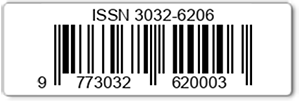The Personal Financial Need And Concurrent Positions As Determinants Of Financial Statement Fraud Indication
Keywords:
fraudulent financial statement, personal financial need, concurrent positions.Abstract
This study aims to determine the effect of personal financial need and concurrent positions on fraudulent financial statements. The sample of this research is mining companies listed on the Indonesia Stock Exchange (IDX) in 2018-2022. The data collection method used is purposive sampling. Based on the purposive sampling method, the number of companies sampled in this study were 30 companies out of a total of 62 listed companies. The length of the study was 5 years to obtain 150 data samples. The data was analyzed by multiple linear regression analysis using the SPSS 26 program. The results of this study shows that personal financial needs and multiple positions have a significant effect on fraudulent financial statements in mining companies listed on the Indonesia Stock Exchange in 2018-2022. The results of this study have implications for the importance of supervision of concurrent positions and personal financial need management for internal parties.
References
ACFE. (2000). Fraud Examiners Manual (Third Edit). Acfe.Com. https://www.acfe.com/fraud-resources
ACFE. (2019). Survey Fraud Indonesia. Acfe-Indonesia.or.Id. https://acfe- indonesia.or.id/survey-fraud-indonesia-2019/
ACFE, (Association of Certified Fraud Examiners). (2022). Occupational Fraud 2022: A Report to the nations. Association of Certified Fraud Examiners, 1–96.
Agustin, M. D., Yufantria, F., & Ameraldo, F. (2022). Pengaruh Fraud Hexagon Theory Dalam Mendeteksi Kecurangan Laporan Keuangan (Studi Kasus Pada Perusahaan Asuransi Yang Terdaftar Di Bursa Efek Indonesia Periode 2017-2020). Journals of Economics and Business Research, 2(2), 47–62. https://doi.org/10.33365/jeb.v2i2.137
Anisah, S. (2023). Jabatan Rangkap Dalam Hukum Persaingan Usaha Di Indonesia Dan Amerika Serikat. Jurnal Hukum Ius Quia Iustum, 30(1), 49–69. https://doi.org/10.20885/iustum.vol30.iss1.art3
Arens, A. (2017). Auditing and Assurance Service. Pearson.
Christian, N., & Visakha, B. (2021). Analisis teori fraud pentagon dalam mendeteksi fraud pada laporan keuangan perusahaan yang terdaftar di bursa efek Indonesia. Conference on Management, Business, Innovation, Education and Social Sciences, 1(1), 1325–1342.
Cressey, D. R. (1953). Other people’s money : a study in the social psychology of embezzlement. Free Press.
Dechow, P. M., GE, W., Larson, C., & Sloan, R. G. (2011). Predicting Material Accounting Misstatements. Contemporary Accounting Research, 28(1).
Ghozali, I. (2018). Aplikasi Analisis Multivariate dengan Program IBM SPSS 25. Badan Penerbit Universitas Diponegoro.
IAPI. (2008). Kode Etik Profesi Akuntan Publik. Dewan Standar Profesional Akuntan Publik - Institut Akuntan Publik Indonesia.
Jannah, V. M., Andreas, & Rasuli, M. (2021). Pendekatan Vousinas Fraud Hexagon Model
dalam Mendeteksi Kecurangan Pelaporan Keuangan. Studi Akuntansi Dan Keuangan Indonesia, 4(1), 1–16. https://doi.org/10.21632/saki.4.1.1-16
Khamainy, A. H., Amalia, M. M., Cakranegara, P. A., & Indrawati, A. (2022). Financial Statement Fraud: The Predictive Relevance of Fraud Hexagon Theory. Journal of Accounting and Strategic Finance, 5(1), 110–133. https://doi.org/10.33005/jasf.v5i1.249
Kusumosari, L., & Solikhah, B. (2021). Analisis Kecurangan Laporan Keuangan Melalui Fraud Hexagon Theory. Fair Value: Jurnal Ilmiah Akuntansi Dan Keuangan, 4(3), 753– 767. https://doi.org/10.32670/fairvalue.v4i3.735
Nabhani, A. (2013). Manipulasi Laporan Keuangan - BEI Jatuhkan Sanksi Garda Tujuh Buana. Neraca.Co.Id. https://www.neraca.co.id/article/31836/manipulasi-laporan- keuangan-bei-jatuhkan-sanksi-garda-tujuh-buana
Octani, J., Dwiharyadi, A., & Djefris, D. (2021). Analisis Pengaruh Fraud Hexagon Terhadap Fraudulent Financial Reporting Pada Perusahaan Sektor Keuangan yang Terdaftar di Bursa Efek Indonesia Selama Tahun 2017-2020. Jabei, 1(1), 36–49. https://akuntansi.pnp.ac.id/jabei
Prasojo, E. (2019). Rangkap Jabatan dan Konflik Kepentingan. Opini Harian Seputar Indonesia, 3.
Purnama, S. I., & Astika, I. B. P. (2022). Financial Stability, Personal Financial Need, Financial Target, External Pressure dan Financial Statement Fraud. E-Jurnal Akuntansi, 32(1), 3522. https://doi.org/10.24843/eja.2022.v32.i01.p15
Riswandi. (2019). Pengaruh Financial Stability dan Personal Financial Need Terhadap Financial Statement ( Studi pada perusahaan manufaktur sektor food and beverage yang di Bursa Efek Indonesia periode 2014-2018 ). 1–28.
Sari, S. P., & Nugroho, N. K. (2020). Financial Statements Fraud dengan Pendekatan Vousinas Fraud Hexagon Model: Tinjauan pada Perusahaan Terbuka di Indonesia. Islamic Economics, Finance, and Banking (ACI-IJIEFB), 1, 409–430.
Skousen, C., Smith, K., & Wright, C. (2008). Detecting and Predicting Financial Statement Fraud: The Effectiveness of the Fraud Triangle and SAS No. 99. Advances in Financial Economics, 13. https://doi.org/10.2139/ssrn.1295494
Soda, E. (2016). PT Timah Diduga Buat Laporan Keuangan Fiktif. Tambang.Co.Ic.
https://www.tambang.co.id/pt-timah-diduga-membuat-laporan-keuangan-fiktif
Tarjo, T., Anggono, A., & Sakti, E. (2021). Detecting Indications of Financial Statement Fraud: a Hexagon Fraud Theory Approach. AKRUAL: Jurnal Akuntansi, 13(1), 119–131. https://doi.org/10.26740/jaj.v13n1.p119-131
Wahyuni, W. (2023). 3 Faktor Penyumbang Fraud Terbesar Pada Perusahaan dan Institusi. Hukumonline.Com. https://www.hukumonline.com/berita/a/3-faktor-penyumbang- fraud-terbesar-pada-perusahaan-dan-institusi-lt642560df37ec6/
Zimeblman, M. F., Albrecht, C. C., Albrecht, W. S., & O, A. (2017). Akuntansi Forensik (4th ed.). Salemba Empat.
Published
Issue
Section
License
Copyright (c) 2024 Rossy Agnesia, Yoremia Lestari Ginting (Author)

This work is licensed under a Creative Commons Attribution 4.0 International License.
Simposium Ilmiah Akuntansi under the terms of a Creative Commons Attribution 4.0 International License / CC BY 4.0 This license permits anyone to copy and redistribute this material in any form or format, compose, modify, and make derivative works of this material for any purpose, including commercial purposes, so long as they include credit to the Author of the original work.










